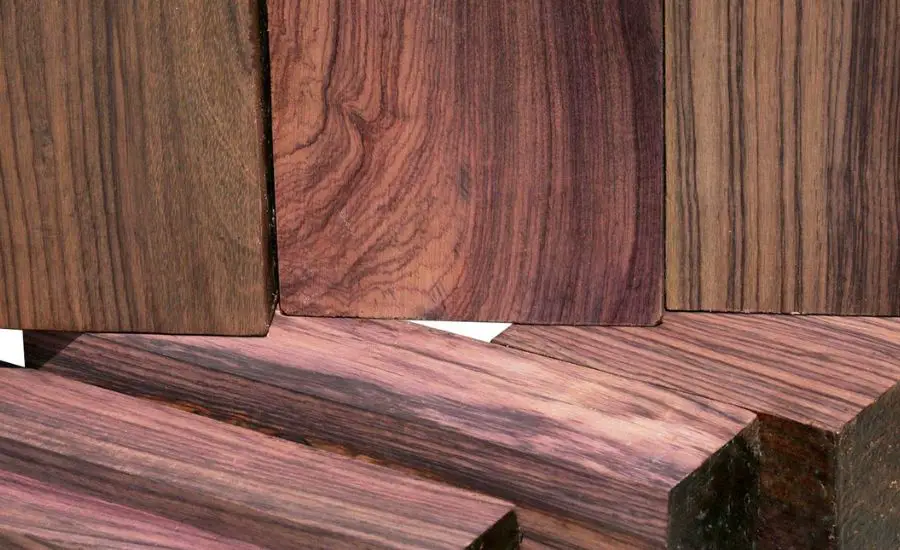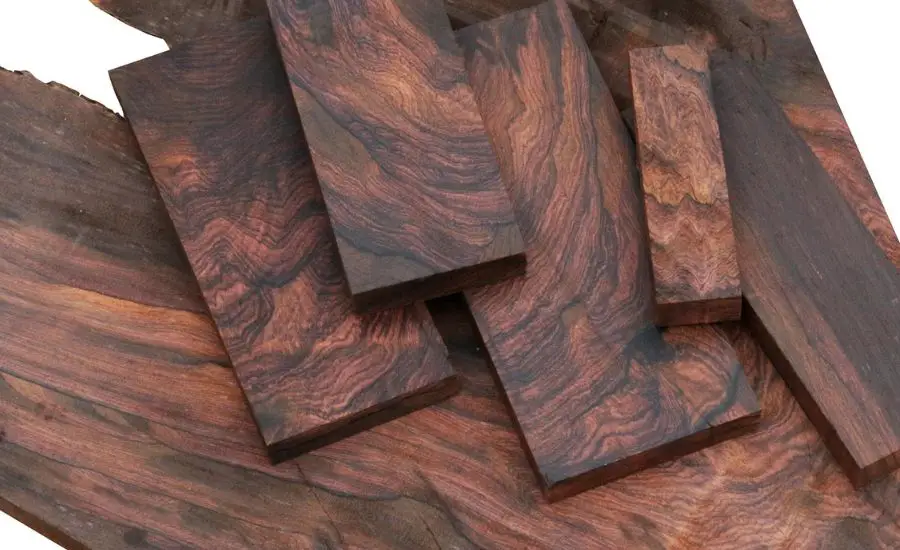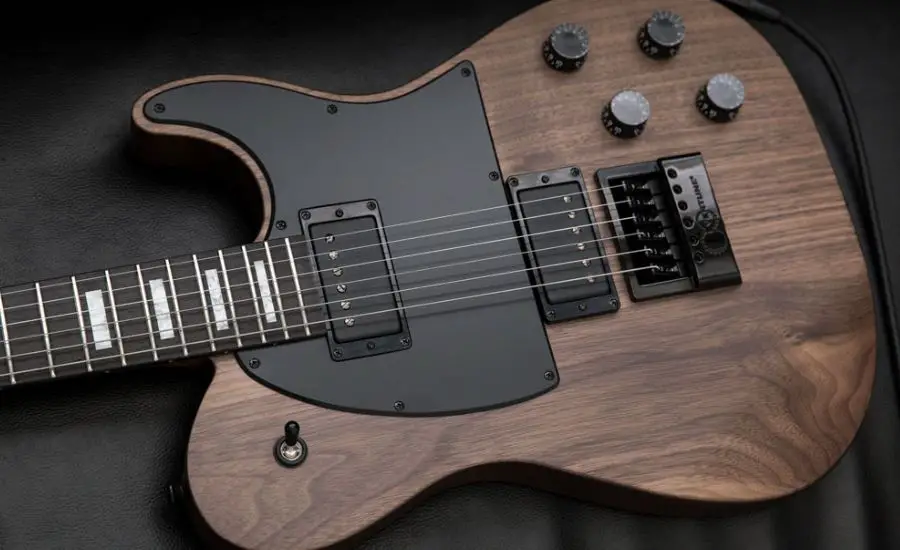Wood is a unique material. It strengthens your connection to nature, creates an atmosphere, and shows style. Selecting the perfect wood for your acoustic or electric guitars, furniture, and other fine woodworking projects, we often face a hard choice: which one to opt for? Today, we are exploring two distinguished types of wood: rosewood vs walnut wood.
Both of these exquisite woods offer unique characteristics that cater to a wide range of applications. In our comprehensive comparison, we delve deep into the universe of rosewood vs walnut wood, investigating their distinct features, uses, and benefits.

- Rosewood vs walnut wood: confrontation or alliance?
- Wood types
- Appearance
- Texture
- Grain Patterns
- Strength and durability
- Rot resistance
- Tonal qualities
- Applications
- Rosewood and walnut wood: the best applications
- Rosewood
- Walnut wood
- In conclusion
- FAQ
- Is walnut better than rosewood guitar?
- Does rosewood and walnut go together?
- How can you tell if the wood is rosewood?
- Is rosewood high quality?
Rosewood vs walnut wood: confrontation or alliance?
Let’s dive into the detailed comparison of rosewood and walnut wood, exploring how they measure up against the relevant criteria.
We will highlight the distinct features of both rosewood and walnut wood, helping you make an informed decision based on your specific needs and preferences.
The choice between these two remarkable woods ultimately depends on your project requirements and the unique qualities you value most.
Wood types
Rosewood: rosewood encompasses a variety of species originated from South America, Africa, and some other tropical areas (about 300 in total), with Brazilian Rosewood being world-famous for its stunning beauty and tonal qualities, East Indian Rosewood and Honduran Rosewood — also renowned, appreciated, and used in various applications.
Most frequently, it’s East Indian Rosewood, which is used for guitar production. The best fretboards are made with the East Indian Rosewood precisely.
Walnut: walnut species (about 20 in total) originate from different parts of the world including North America, Asia, and Europe. It is primarily represented by Black Walnut, known for its rich, dark brown color and beautiful grain pattern. English Walnut tree is another variation of lighter shades, which is widely used in furniture production.

Appearance
Rosewood: the reddish-brown color and fine, even surface make rosewood an excellent choice for crafting exquisite furniture and musical instruments. The aesthetic appeal of rosewood is often likened to exotic elegance.
Walnut: walnut’s dark chocolate color, often complemented by darker streaks, gives it a distinct appearance that’s favored for a fine dining table and furniture craftsmanship.
Texture
Rosewood: rosewood features a coarse texture that adds to its unique character, making it a suitable choice for various applications, including furniture and basic materials.
Walnut: walnut boasts a medium texture, offering a balance between fine texture and character, making it versatile for woodworking projects.

Grain Patterns
Rosewood: the fine grain of rosewood enhances the warm tonal characteristics in musical instruments, making it a preferred choice for acoustic guitars and other musical applications.
Walnut: walnut’s distinctive straight grain patterns add a warm tone character and elegance to furniture, making it a popular choice in the world of woodworking.
Strength and durability
Rosewood: rosewood is renowned for being resistant and strong wood, making it a prime selection for fine furniture and musical instruments. Its robust nature ensures longevity.
Walnut: while not as naturally strong as Rosewood, Walnut offers sufficient durability for a wide range of woodworking projects, and its moderate strength is often complemented by its aesthetic appeal.

Rot resistance
Rosewood: rosewood’s inherent resistance to rot and decay makes it suitable for outdoor applications, such as decking and boat building.
Walnut: while it may not be on the same level as rosewood, walnut’s rot resistance still maintains a decent level. This soft wood is durable and, with proper maintenance, will live a long life without losing its beauty and charm.
Tonal qualities
Rosewood: rosewood’s tonal capabilities contribute to a warm and resonant sound, making it highly sought after in the crafting of acoustic guitars and other musical instruments.
Walnut: walnut’s tonal characteristics create a balanced sound, making it a unique choice for musical instrument construction, including a bass guitar.
Applications
Rosewood: rosewood is commonly used in the production of guitars and furniture, thanks to its aesthetic appeal and tonal capabilities.
Walnut: walnut finds its place in a diverse range of applications, from crafting furniture to the construction of tables and musical instruments, particularly bass guitars.

Rosewood and walnut wood: the best applications
While Rosewood and Walnut both offer unique characteristics and qualities, they excel in different applications.
We want to get into more detail regarding the area where rosewood and walnut wood shine the most, being not only the most efficient material but also bringing beauty and joy to the lives of their owners.
Understanding the ideal uses for each type of wood can also help you make the right choice for your specific project.

Rosewood
#1. Acoustic guitars
Rosewood is a favored choice for the backs and sides of this type of guitar. Its fine grains and warm tonal characteristics contribute to a rich, resonant sound.
#2. Electric guitars
Some manufacturers use rosewood for fretboards, adding a touch of elegance and enhancing the playability of the guitars.
#3. Other musical instruments
Rosewood’s tonal characteristics extend beyond guitars; it’s also used in crafting other musical instruments like pianos and violins.
#4. High-quality furniture
The reddish color and even surface of Rosewood make it a perfect fit for crafting luxury furniture with a luxurious aesthetic.

#5. Rosewood furniture
As the name suggests, rosewood furniture is made exclusively from this wood, offering a distinctive and timeless appearance.
#6. Fine artisan pieces
Rosewood’s beautiful grains and strength make it an excellent choice for crafting fine artisan pieces, such as boxes, carvings, and sculptures.
Walnut wood
#1. Dining tables
The dark chocolate or golden brown hue and distinct straight grain of walnut wood make it a popular choice for crafting elegant tables, which look gorgeous in the dining rooms.
#2. Furniture
Walnut wood is a versatile wood for furniture production, including cabinets, desks, and chairs, due to its medium texture and aesthetic appeal.
Its golden brown tone brings sophistication and style to any home.

#3. Bass guitars
Walnut’s balanced tonal characteristics and moderate strength make it an ideal choice for crafting such guitars.
#4. Cabinetry
The moderate hardness of walnut wood and its beautiful appearance make it an excellent choice for kitchen and bathroom cabinetry.
#5. Interior woodwork
Walnut’s texture and aesthetic appeal also suit interior woodwork, including paneling and moldings.
#6. Raw materials
The distinct appearance of walnut wood and character make it a sought-after choice for basic materials used in various woodworking projects.
In summary, Rosewood excels in applications where its tonal qualities, fine grains, and even surface are highly valued, such as in guitars, furniture, and other musical instruments.
On the other hand, walnut wood with its dark and distinctive appearance, along with its texture, makes ideal furniture of various kinds, guitars, and a variety of raw materials in woodworking.
Choosing the right wood ultimately depends on the specific requirements of your project and the unique characteristics you seek.

In conclusion
In the universe of fine woodworking and the crafting of musical instruments, the choice between rosewood vs walnut wood represents a crucial decision.
Both rosewood and walnut wood, being remarkable woods, offer a diverse range of characteristics and applications, ensuring that there’s a perfect fit for every project.
Rosewood, with its reddish hue, fine grain, and smooth surface, shines in applications where its tonal qualities and aesthetic elegance take center stage.
From acoustic and electric guitars to luxury furniture and musical instruments, rosewood continues to be a top choice for those who value its unique attributes.
On the other hand, walnut wood, with its chocolate color, dark streaks running in intricate ornaments, and soft, want-to-touch texture, brings character and elegance to projects like dining tables, cabinetry, and other furniture craftsmanship, and even musical instrument creation, particularly, bass guitars.
Its versatility and aesthetic appeal make it an excellent option for a wide range of woodworking endeavors.
As you embark on your next woodworking or musical instrument project, consider the specific criteria, needs, and preferences that align with rosewood vs walnut.
Whether it’s the warm tones of Brazilian Rosewood or the rich, dark appearance of Black Walnut, both woods have earned their esteemed places in the world of craftsmanship.
The choice between the two types ultimately rests on your creative vision and the particular demands of your project.
Regardless of your selection, both woods offer a beautiful canvas for your woodworking endeavors, ensuring that your creations will stand the test of time.
FAQ
Is walnut better than rosewood guitar?
It depends on your preferences. Walnut and rosewood offer different tonal qualities, so it’s a matter of personal taste. Some prefer the warm, rich tones of rosewood, while others like the balanced sound of walnut.
Does rosewood and walnut go together?
Yes, rosewood and walnut can be used together in woodworking projects, creating a contrast in appearance and potentially enhancing the overall aesthetic.
How can you tell if the wood is rosewood?
You can identify rosewood by its reddish-brown color, fine grain pattern, and typically smooth surface. Its distinct appearance and aroma can also help in recognition.
Is rosewood high quality?
Yes, rosewood is considered high quality in woodworking and music instrument construction due to its durability, fine grain pattern, and excellent tonal qualities.


![Sapele vs. walnut wood [5 main differences] Sapele Vs. Walnut Wood: Top 5 Differences & Best Guide](https://bestwoodforcarving.com/wp-content/uploads/2024/01/wood-53-335x220.jpg)
![Mango wood furniture pros and cons [9 tips] Mango wood furniture pros and cons + 9 tips before you buy](https://bestwoodforcarving.com/wp-content/uploads/2024/01/wood-51-335x220.jpg)

![Which advantages and disadvantages of hickory wood? [8 factors] Top 8 Disadvantages Of Hickory Wood: Best Helpful Guide](https://bestwoodforcarving.com/wp-content/uploads/2024/01/wood-38-335x220.jpg)


![How Long Do Wood Pellets Last? [6 Essential Insights Unveiled] How long do wood pellets last](https://bestwoodforcarving.com/wp-content/uploads/2023/12/How-Long-Do-Wood-Pellets-Last-6-Essential-Insights-Unveiled-2-335x220.jpg)
![Tung oil vs polyurethane [4 main comparison factors] Tung Oil Vs Polyurethane: Top 4 Factors & Best Helpful Guide](https://bestwoodforcarving.com/wp-content/uploads/2023/12/wood-14-335x220.jpg)
![Is tung oil flammable? [7 Preventive measures] Is Tung Oil Flammable: Top 7 Safe Tips & Best Guide](https://bestwoodforcarving.com/wp-content/uploads/2023/12/What-is-a-Wood-Planer-3-335x220.jpg)